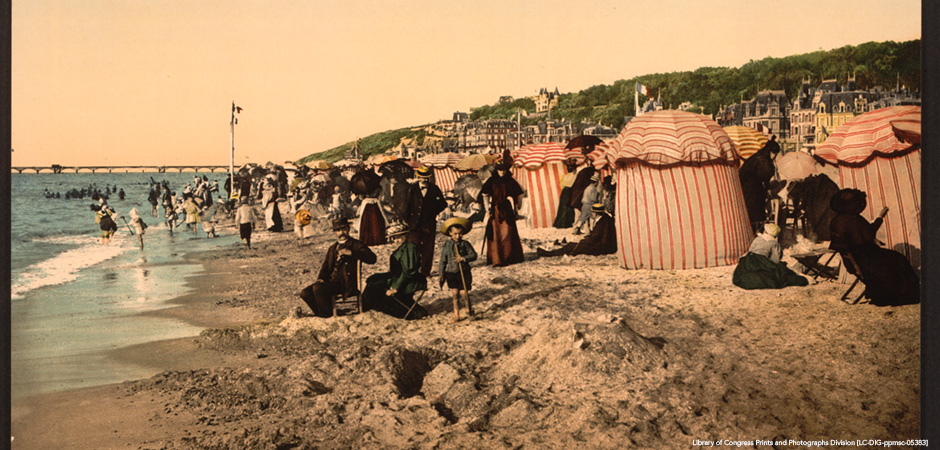
Vacations haven’t always been a day at the beach. The beach is a common destination for many vacationers today. But going to the beach hasn’t always meant fun in the sun. For much of history, the beach was considered a wilderness full of hazards–such as mythological creatures, shipwrecks, menacing pirates, and threatening storms.
The origins of relaxing on the beach can be traced back to Europe’s eighteenth century. The industrial revolution in England overcrowded cities and caused unsanitary living conditions with much pollution. The beach began to be seen as a healthy alternative to the experience in cities. In the early 1700s, seaside resorts in Great Britain attracted wealthy people who wanted to enjoy a restful break in the fresh sea air. By the mid-1700s, a trip to the shore was thought to have medicinal advantages that could cure many ailments.
Beaches Become Popular Destinations
The development of passenger railroads in the mid-nineteenth century in Britain provided the middle class with an easier way to travel to the shore. A day at the beach back then did not mean splashing in the surf. Many people enjoyed beach vacations by strolling on resort boardwalks or lounging on the beach fully dressed in semi-formal attire. Men and women were often not permitted to swim in the same areas. Devices called bathing machines became popular at this time. These machines were wheeled carts that served as dressing rooms. They allowed bathers to enter the shallow surf without being seen.
By the twentieth century, the beach vacation had spread to other European countries and to the United States. Men and women were now generally allowed to swim together. In 1920s America, going to the beach became an opportunity to exercise and get a tan. Travelling to the shore became more common. While Coney Island in Brooklyn had long been a popular destination, a subway line completed in 1920 meant that more and more people could make the trip to the beach.

Americans Make Beach a Vacation Destination
Improvements in transportation continued to play a part in the history of beach vacations. Early construction of the interstate highway system in the 1950s meant a family could drive from inland areas to the shore. With the growing popularity of air travel in the 1960s, Americans could conveniently travel further to reach their desired beach locations.
Surf culture became a trend in the 1950s and 1960s, and it was popularized by television, popular music, and movies. The beach was no longer just a vacation spot. The beach came to symbolize leisure, fitness, and fun.
Beaches Threatened by Coastal Erosion
While beaches have become a favorite location to visit or to live, the health of many beaches has been jeopardized by coastal erosion. Erosion of the coast is a natural process, but it has been made worse by several factors. Man-made attempts to protect beaches, such as with jetties, have often caused more harm than good. Jetties are long, narrow structures meant to protect a coastline from ocean currents and tides. Rising sea levels and increasingly extreme weather events have become more frequent due to climate change. This has also contributed to coastal erosion.
Many beaches around the world are undergoing beach nourishment programs to try and replace the depleted sand. These programs often do little to solve the problem, and some are causing additional problems for habitats. Coastal erosion can cause loss of property, loss of habitat, and can result in increased flooding from storms.
